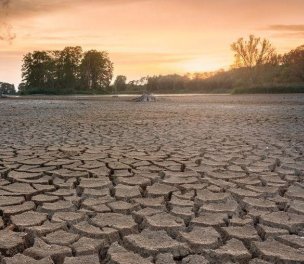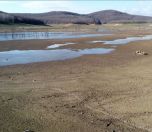* Photo: Pixabay
Click to read the article in Turkish
The Turkish Statistical Institute (TurkStat), the state agency assigned with producing official statistics on Turkey, released its "Waste and Wastewater Statistics" for 2020 today (December 17).
The statistics have shown that In 2020, a total of 18.2 billion cubic meters of water was abstracted from water resources in Turkey; 9.8 billion cubic meters of this amount was for cooling purposes.
In 2018, municipalities, villages, manufacturing industry establishments, thermal power plants, organized industrial zones and mining establishments abstracted 17.5 billion cubic meters of water from the environment, 9.5 billion cubic meters of which was for cooling purposes.
In 2018, 56.2 percent of the total amount of water was abstracted from sea, and a total of 43.8 percent, of which 22.9 percent was groundwater and 20.9 percent surface water, was abstracted from fresh water resources.
In 2020, this rate is 56 percent for the sea, and a total of 44 percent, of which 22.5 percent was groundwater and 21.5 percent surface water, was abstracted from fresh water resources. In 2020, 93.9 percent of the water abstracted from the sea was provided for cooling purposes.
Highest amount used by thermal plants
Out of the total amount of water abstracted from the environment in 2020, 45.4 percent was abstracted by thermal power plants, 35.6 percent by municipalities, 14.2 percent by manufacturing industry establishments, 2.3 percent by villages, 1.5 percent by mining establishments and 1 percent of water was abstracted by organized industrial zones.
Out of the total amount of water abstracted from the environment in 2018, 44.9 percent was abstracted by thermal power plants while 35.3 percent was abstracted by municipalities, 15.3 percent by manufacturing industry establishments, 2.2 percent by villages, 1.4 percent by mining establishments and 0.9 percent by organized industrial zones.
According to the TurkStat statistics, out of the total amount of fresh water abstracted from the environment in 2020, 80.9 percent was abstracted by municipalities, 7.8 percent by manufacturing industry establishments, 5.2 percent by villages, 4.7 percent by mining establishments and organized industrial zones, and 1.4 percent by thermal power plants.
Wastewater discharge
In 2020, municipalities, villages, manufacturing industry establishments, thermal power plants, organized industrial zones and mining establishments discharged 15.3 billion cubic meters of wastewater to receiving bodies, 9.5 billion cubic meters of which was cooling water.
76.6 percent was discharged to sea, 19.3 percent to rivers, 1.1 percent to dams, 1 percent to septic tanks, 0.4 percent to lakes and artificial lakes, 0.2 percent onto land and 1.4 percent to other receiving bodies. 80.5 percent of wastewater discharged to sea was cooling water.
In 2020, out of the total amount of wastewater discharged by municipalities, villages, manufacturing industry establishments, thermal power plants, organized industrial zones and mining establishments, 62 percent was cooling water, whereas 38 percent was other wastewater excluding cooling water. 79.7 percent of wastewater (excluding cooling water) discharged directly to receiving bodies was treated.
Water abstracted, discharged by municipalities
According to the results of the Municipal Water Statistics Survey 2020, applied to all municipalities, 1,387 out of 1,389 municipalities were served by water supply networks. 6.5 billion cubic meters of water was abstracted from water resources by municipalities to water supply networks.
According to the results of the Municipal Wastewater Statistics Survey 2020, applied to all municipalities, 1,362 out of 1,389 municipalities were served by sewerage systems.
Out of 5 billion cubic meters of wastewater collected through sewerage systems, 49.2 percent was discharged into rivers, 38.5 percent into sea, 3.1 percent into dams, 1.3 percent into lake and artificial lake, 0.4 percent onto land, and 7.5 percent to other receiving bodies.
Out of 6.5 billion cubic meters of water abstracted from water resources to water supply networks, 3.9 billion was treated in water treatment plants. 93.1 percent of this was treated by conventional methods, 6.7 percent by advanced methods, and 0.2 percent by physical methods.
Out of 5 billion cubic meters of wastewater discharged from sewerage systems, 4.4 billion cubic meters was treated in wastewater treatment plants. While 50.7 percent of this amount was treated by advanced treatment, 27.1 percent of it was biological treatment, 21.9 percent was physical treatment and 0.3 percent was natural treatment.
46.4 percent of the treated wastewater was discharged into rivers, 42.8 percent into sea, 3 percent into dams, 1.2 percent into lakes and artificial lakes, 0.3 percent onto land, and 6.2 percent into other receiving bodies. It was determined that 1.6 percent of the wastewater treated by municipalities was reused in industrial processes, irrigation, etc.
Per capita water abstracted, discharged
The average amount of water abstracted by municipalities to water supply networks is 228 liters per capita per day. Concerning the three largest cities, the average amount of abstracted water per capita per day was 190 liters for İstanbul, 246 liters for Ankara, and 221 liters for İzmir.
The average amount of wastewater discharged from municipal sewerage systems per capita per day is 189 liters. Concerning the three largest cities, the average amount of wastewater discharged per capita per day was 248 liters for Istanbul, 151 liters for Ankara, and 174 liters for Izmir.
Water in Turkey
Contrary to popular belief, Turkey is not rich in water; on the contrary, it is a country "having water shortage" with 519 cubic meters water per capita. Moreover, it is projected that its population will hit 100 million people in 2030 and the water per capita will decline to 120 cubic meters. These projections indicate that Turkey might be a "water poor country" in the near future.
In January 2021, the NASA Earth Observatory shared two maps showing the groundwater wetness percentile and root zone wetness percentile, warning that the groundwater storage had dropped below in Turkey.
According to the World Wide Fund for Nature (WWF) Turkey, the following cities in Turkey are on the global list of cities facing water risk: Bursa, Mersin, Konya, Adana and Antalya.
"In the last 50 years, half of the wetlands in Turkey have lost their sound structure in terms of quantity and quality of water.
"In other words, a westland area three times the size of Lake Van has lost its ecological function. The risk concerns not only our surface waters, but the condition of our ground waters is also alarming. The loss of our forestlands is another factor paving the way for drought." (TP/SD)








as.jpg)